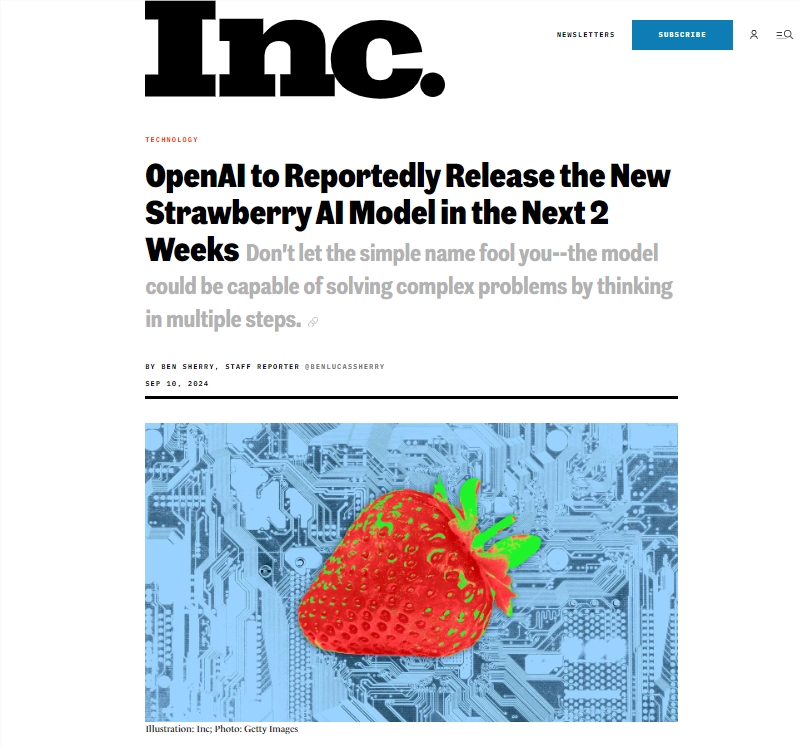OpenAI is about to launch a major upgrade of ChatGPT - the ChatGPT Pro service priced at US$200/month, and plans to launch a new "strawberry" model in the next two weeks. The core of this model lies in its unique reasoning method, which will perform 10-20 seconds of thinking and information retrieval before answering a question to improve the efficiency of AI computing power utilization and generate more accurate content. Although it currently only supports text processing, its innovative attempts to imitate human thinking processes are worthy of attention.
OpenAI is about to bring a major upgrade to ChatGPT. It is reported that ChatGPT Pro, priced at US$200/month, has been officially launched. Although no new features or models have been introduced yet, users can expect to experience the new strawberry model in the next two weeks. This high-profile AI model will not only provide powerful technical support for ChatGPT, but will also attract industry attention with its unique reasoning method.

The core feature of the strawberry model is its ability to imitate the human thought process. It can spend 10 to 20 seconds thinking and retrieving information before giving an answer. This innovative processing method is designed to improve the efficiency of AI computing power utilization and thereby generate more accurate content.
However, it is worth noting that the strawberry model only supports text processing in the initial stage and does not yet have the image and audio processing capabilities of GPT-4.

In fact, this technology of extending inference time and adaptive adjustment is not the first of its kind in OpenAI. Google DeepMind has already conducted in-depth research in this field and published relevant papers. The researchers found that through test-time computing technology, the performance of large language models can be significantly improved, breaking through the limitations of current models in training data sets and inference computing resources.
There are two main types of optimization strategies for the strawberry model. The first type is based on an intensive, process-oriented verification reward model, which requires the model not only to output results, but also to provide a logical reasoning process, which is especially suitable for complex mathematical and logical reasoning tasks.
The second strategy is to dynamically adjust subsequent answers based on previously generated content and continuously optimize the output quality through multiple rounds of iteration. The calculation optimization strategy proposed by the researchers aims to select the most appropriate test-time calculation method according to the specific situation, which significantly improves calculation efficiency.
However, the strawberry model also faces some challenges. Although excellent at reducing errors and hallucinations, response times of 10 to 20 seconds can impact user experience. There is feedback from trial users that these slightly more accurate answers do not seem to be enough to make up for the longer waiting times.
In addition, as advanced capabilities may lead to higher consumption of computing resources, usage costs may also increase. In order to balance user experience and resource consumption, OpenAI may set an upper limit on the frequency of message sending and consider launching higher-priced packages to provide faster response times.
All in all, the "Strawberry" model represents a useful attempt by OpenAI to improve the accuracy and reasoning capabilities of large language models, but its 10-20 second response time and potential cost issues still require further observation and improvement. Its future success depends on whether OpenAI can effectively balance the relationship between accuracy, speed and cost.